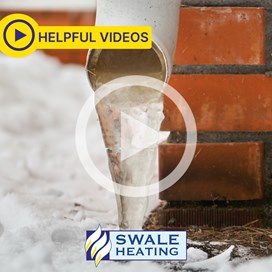Guide to frozen pipes
13 January 2022
As the weather starts to turn a bit colder, and the frost starts to appear in the mornings, one of the least desired things that could happen would be a lack of hot running water, or even worse, a burst water pipe. These are our top tips on identifying and putting precautions in place to prevent pipes from freezing. You can also watch our handy video on how to defrost a frozen condensate pipe here.
There are 4 clear ways to tell when you have frozen pipes;
- Lack of running water from taps – This could be caused from the blockage of ice within the pipe.
- Strange smell coming from the drain – Any smell within the pipe wouldn’t have any exit route, so would have to make its way back up the drain.
- There is frost on the pipe – This is the clearest indication as the frost would show a lack of temperature warmth within the pipe.
- Damp drywall where the pipe runs through – Although it would take a long time for signs of damp to show, if there is any frost on piping, some of the moisture would drip onto the drywall, eventually leaving damp marks.
When the temperature outside begins the fall below 0 °c, certain precautions should be taken to prevent the water in the pipes from freezing and causing havoc within the family home:
- Pipe covering – Any form of pipe covering or insulation for the pipe would be a great way of preventing your pipes from freezing.
- Keep the temperature steady – Try to ensure the temperature within the building doesn’t go below 10°c.
- Open boiler cabinet/cupboard doors- If your boiler happens to be hidden away in a cupboard or cabinet, there is a slight risk of your pipes freezing because cupboards tend to be the coldest rooms of the house. If the door is left open, the cupboard/cabinet would be able to get up to room temperature.
- Let the water drip- On the coldest of days, you could let the tap drip water so there is constant movement within the pipe, thus preventing freezing to occur. To avoid a flood, always ensure the drain is not blocked. Please note, constant running water will increase the water usage of the home and potentially raise water usage bills.
Even after taking all necessary precautions, although this may seem inconceivable, your pipes may still unfortunately end up freezing over. If you can locate where in the pipeline the freezing has taken place, you will be able to thaw out the pipe using a form of heat such as towels, hair dryer etc, and make water transferable again. However, if you have any queries with this, or you are unable to locate the frozen pipe, we would recommend contacting us for one of our trusted engineers to come and inspect the problem.
